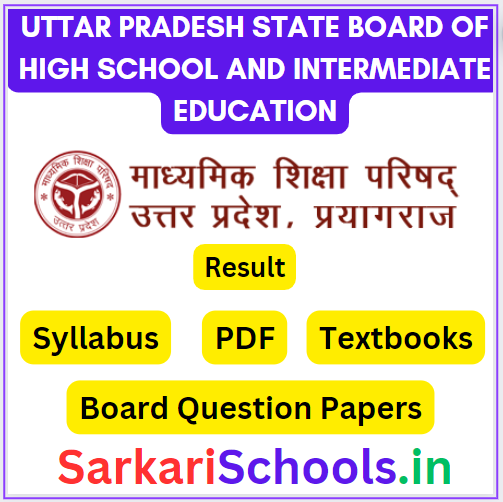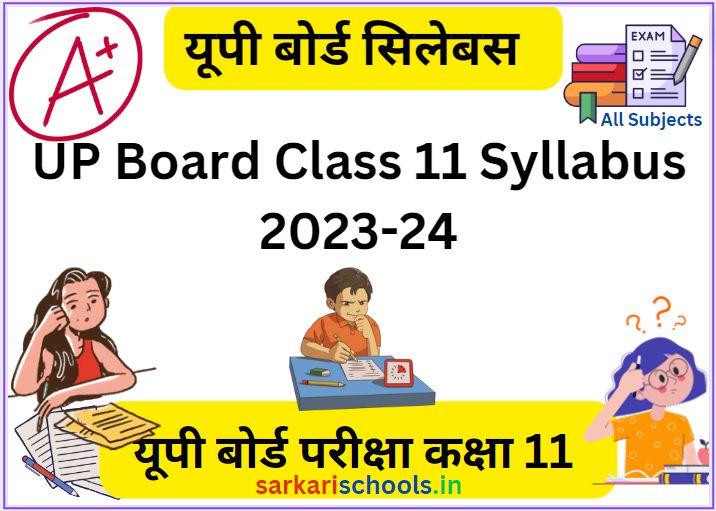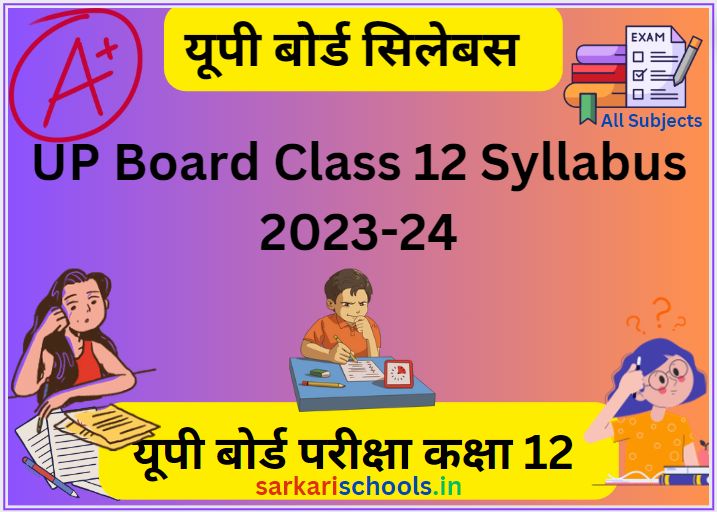Explore the rich legacy of the Uttar Pradesh State Board of High School and Intermediate Education, established in 1921. Discover its pivotal role as the largest examining body globally, overseeing 10+2 examinations, recognizing over 22,000 schools, and shaping the academic landscape in Uttar Pradesh. Unlock opportunities and insights into the educational framework of this esteemed board.
Table of Contents
Uttar Pradesh State Board of High School and Intermediate Education

Uttar Pradesh Madhyamik Shiksha Parishad
UP Board Overview
| UP Board Official Name | UPMSP |
| UPMSP Full Form | Uttar Pradesh Madhyamik Shiksha Parishad |
| UP Board Full Form in Hindi | माध्यमिक शिक्षा परिषद, उत्तर प्रदेश |
| UP Board Name in English | BHSIEUP (Board of High School and Intermediate Education Uttar Pradesh) |
| UPMSP (BHSIEUP) Role | Conducting Class 10 and Class 12 Exams |
| Headquarters | Prayagraj, Uttar Pradesh |
| Inception | 1921 |
| Parent Organisation | Department of Education, Uttar Pradesh |
| Official Website | https://upmsp.edu.in |
Historical Overview:
Established in 1921 in Prayagraj by an act of the United Provinces Legislative Council, the Board conducted its inaugural examination in 1923. Pioneering the 10+2 examination system in India from its inception, the Board’s first public examination post 10 years of education is the High School Examination, followed by the Intermediate Examination after the 10+2 stage. Prior to 1923, the University of Prayagraj oversaw these examinations.
| Aspect | Information |
|---|---|
| Establishment Year | 1921 |
| Location | Prayagraj |
| Examination System | 10+2 |
| First Examination | 1923 |
| Global Ranking | Largest Examining Body in the World |
| Regional Offices | Meerut (1973), Varanasi (1978), Bareilly (1981), Prayagraj (1987) |
| Present Students | Nearly 64 lakh |
| Number of Schools | 22,000+ recognized secondary schools |
| Administrative Head | Director of Education of the State (Ex-Officio Chairman) |
| Secretary | Appointed by the State Government |
| Sub-Committees | Curriculum, Examination, Result, Recognition, Finance |
| Subjects Committees | 40 |
Presently, the Board stands as the largest examining body globally. As the workload increased over the years, the Board faced challenges in centrally managing and conducting its activities from Prayagraj. Consequently, Regional Offices were established in Meerut (1973), Varanasi (1978), Bareilly (1981), and Prayagraj (1987), each under the supervision of Regional Secretaries, while the head office remained in Prayagraj with the Secretary serving as the overall executive head. The Regional Office at Ramnagar (Nainital) was later separated from the U.P. Board following the creation of Uttaranchal as a new state on 08-11-2000. Presently, the Board oversees the examinations and result preparations for nearly 64 lakh students.
Main Functions:
- Granting recognition to aspiring schools.
- Prescribing courses and textbooks for High School and Intermediate levels.
- Conducting High School and Intermediate Examinations.
- Providing equivalence to examinations conducted by other Boards.
Number of Schools:
In Uttar Pradesh, a few secondary schools fall under the Indian Council of School Education (I.C.S.E.) and Central Board of Secondary Education (C.B.S.E.). However, the majority seek recognition from the U.P. Board. Currently, there are more than 22,000 secondary schools recognized by the U.P. Board of High School and Intermediate Education.
Administrative Setup:
The Ex-Officio Chairman of the Board is the Director of Education of the State. The State Government appoints the Secretary of the Board, and there are eight other Ex-Officio members. The main sub-committees of the Board include the Curriculum Committee, Examination Committee, Result Committee, Recognition Committee, and Finance Committee, along with 40 Subjects Committees.

UPMSP Syllabus
Unlock academic excellence with the Uttar Pradesh State Board of High School and Intermediate Education (UPMSP). Explore the comprehensive syllabus for classes 1-12, designed to empower students with knowledge and skills. Navigate the educational landscape and access official updates on curriculum, subjects, and examinations. Elevate your learning journey with the UPMSP syllabus – shaping futures, fostering success.
UP Board Textbooks
Uttar Pradesh State Board of High School and Intermediate Education (UPMSP) may provide textbooks for classes 1-12. However, specific details, availability, and updates to the textbook list can change, and it’s advisable to check the official UPMSP website or contact the board directly for the most current information.
To find UP Board textbooks, you can visit the official UPMSP website or visit local authorized bookstores that cater to educational materials. Additionally, online platforms and bookstores may offer UP Board textbooks for purchase.
Keep in mind that the availability of textbooks may vary by academic year, and the official sources are the best places to get accurate and up-to-date information on the prescribed textbooks for UP Board classes.
UPMSP Board Question Papers
Uttar Pradesh State Board of High School and Intermediate Education (UPMSP) may provide previous years’ question papers on its official website. These question papers can be valuable resources for students preparing for examinations as they offer insights into the exam pattern, marking scheme, and types of questions asked.
To access UPMSP board question papers:
- Official Website: Visit the official website of UPMSP. Look for a dedicated section related to examinations, question papers, or student resources. The board may provide question papers for various classes and subjects.
- Online Platforms: Some educational websites and platforms also host previous years’ question papers. These platforms may include educational resources and materials to assist students in their exam preparation.
- Schools and Educational Institutions: Local schools and educational institutions affiliated with UPMSP may also have access to previous years’ question papers. Students can inquire with their school authorities for assistance.
- Contacting the Board: If question papers are not readily available online, you may contact the UPMSP board directly through their official contact information. They can provide guidance on accessing question papers or may have alternative methods for obtaining them.



